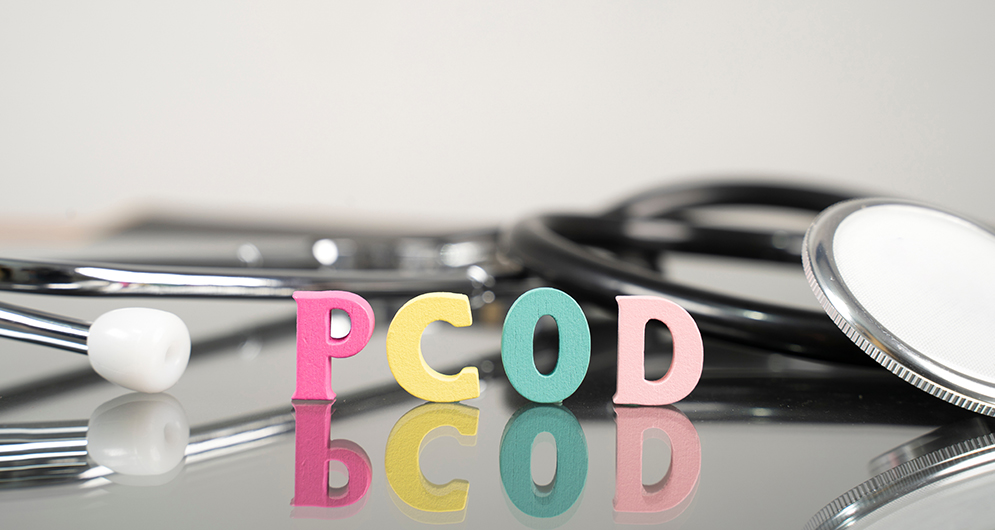PCOD and Fibroids are both common disorders that are often caused by hormonal imbalance. PCOS, or Polycystic Ovarian Syndrome, is a hormone disorder in which the follicles on the ovaries become enlarged, blocking them from releasing eggs. This can lead to menstrual irregularities and infertility. Fibroid tumours are growths of muscle tissue that form within the uterus walls. These tumours cause heavy periods and intense uterine pain during menstruation due to their size and location.
These issues have become increasingly common over recent years for many reasons, including obesity rates rising worldwide as well as women starting to enter menopause earlier than ever before (often around age 40). It is important to understand what these conditions are because they significantly impact a woman’s fertility. It is also important to treat these conditions because they can cause dangerous complications if not diagnosed or treated properly, including endometrial cancer and miscarriage.
This blog will walk you through the diagnosis, treatment and management of PCOD and Fibroids. But first, let’s take a look at what these medical conditions are.
What are PCOD and Fibroids?
PCOS and Fibroids are two different conditions. However, they frequently occur in women and can be frustrating to manage since their symptoms often overlap. For example, both PCOD and Fibroids contribute to heavy menstrual periods. In addition, many women with one condition also have the other simultaneously or later down the road as a result of the body’s changes and the link between these two conditions.
PCOD, by definition, is a hormonal disorder that affects a woman’s hormone levels, the menstrual cycle and fertility. PCOD is also known as Polycystic Ovarian Syndrome. It occurs when a woman develops numerous small cysts on her ovaries which prevents them from producing eggs properly for fertilization.
Fibroids are non-cancerous tumours of the uterus lining (endometrium). Fibroids often cause heavy bleeding during menstruation but can also lead to infertility if they grow out of control or become embedded in the uterine cavity where implantation takes place. If this happens, it may interfere with embryo adhesion and development, thus preventing pregnancy.
PCOD
Diagnosis: There are three main types of PCOS diagnosis.
- There are diagnostic criteria that need to be met for two seasons or more.
- The diagnosis is based on clinical findings and the presence of hyperandrogenism (elevated male hormone levels).
- A woman can have polycystic ovaries without meeting any other PCOS diagnostic criterion if she has obesity-related insulin resistance with menstrual irregularity.
Treatment: There are different treatment options for treating PCOS depending on the severity of each case/symptom. Here are some treatment options:
- Exercise and diet
- Metformin (a pill that helps with blood sugar regulation)
- Spironolactone (a pill that is used as a diuretic)
- Oral contraceptives (birth control pill)
- Luteinizing hormone-releasing hormone agonists (a shot that helps with menstrual regularity and fertility by using a synthetic form of the natural lutenizing hormone, which is produced in women during ovulation)
- Gonadotropins (shots that stimulate the production of eggs).
pcod-and-fibroids-diagnosis-treatment-and-management: The main goal of management is to restore menstrual cyclicity (cycles), decrease the symptoms associated with this condition, improve fertility if that’s an issue for you, help aim at weight loss goals, and improve long-term health if that’s a concern. If everything else fails, there are surgical treatments.
Fibroids
Diagnosis: Fibroids are benign tumours found in the uterus. They can range from being smaller than 1cm to larger than 12 cm across. There are different types depending on their location inside the uterus. These are diagnosed by using imaging tests, such as ultrasounds and MRI.
Treatment: Fibroid treatment depends on the patient’s symptoms and how large she is if they are in certain locations of your uterus or not since some treatments wouldn’t be appropriate for some cases.
There are five main options that women with uterine fibroids have to get rid of their problem without surgery:
- Watchful waiting
- Medication (used to shrink the fibroids)
- Pain management for patients who have heavy periods, pain during sex or backache with no other symptoms.
- Uterine artery embolization (an outpatient procedure done under general anesthesia that blocks off blood flow to the uterus) This method is usually used in women who cannot take hormones that cause menopause because of their age, history of cancer or high-risk factors.
- Myomectomy (uterine fibroid removal surgery).
Management: The goal is to treat the symptoms and prevent new growth or a complication that would require a surgical intervention. Weight loss, exercise, avoiding lifting heavy objects are some ways to manage your condition. For women who have severe bleeding due to their uterine fibroids, they can take hormones called gonadotropin-releasing hormone agonists (GnRH), which will help reduce menstrual blood flow by decreasing estrogen production in women with PCOS. If you become anaemic from being on this treatment for a longer period of time, your doctor can add a tranexamic acid medication to help with blood clotting.
Takeaways
When it comes to PCOD and Fibroids, the most important thing is that you know what’s going on with your body. If you think something isn’t right or there is a problem in terms of fertility or pain, go see a doctor; don’t wait for symptoms to develop.
To get more clarity on these medical conditions, your symptoms and to get the best treatment from the top gynaecologists in Noida, book an appointment with Motherland Hospital!

